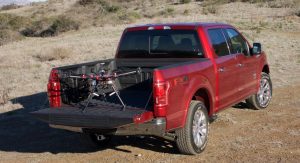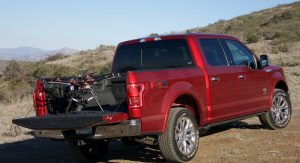Ford is working together with drone-maker DJI in order to drive forward innovation in smart drone-to-vehicle software meant to facilitate emergency services and commercial business efficiency.
Despite this tech being created for use by the United Nations in emergency zones, future applications might also include agriculture, forestry, construction and bridge inspection, among others. These types of innovations are part of Ford Smart Mobility, which in turn is meant to take the American automaker to the next level in terms of connectivity, mobility and autonomous vehicles as well.
The idea behind this particular project is basically a world where vehicles and drones are efficiently working together – which is why Ford and DJI are announcing a challenge to develop the software that will make this “dream” possible.
Innovators around the world are invited to participate in the DJI Developer Challenge, where their task will be to create drone-to-vehicle communications using Ford SYNC AppLink or OpenXC. This type of tech could allow UN first responders to quickly deploy drones able to survey different types of areas during earthquakes or tsunamis – all from the cab of an F-150 truck.
Ford VP for Advanced Engineering, Ken Washington, said that his company is “driving innovation in every part of our business to help make people’s lives better. Working with DJI and the United Nations, there is an opportunity to make a big difference with vehicles and drones working together for a common good.”
App developers can apply for the Challenge starting with January 10th and up until March 10th by visiting this link. Of course, if they’re in need of incentives, all they need to know is that the prize is a sweet $100,000 of the winner.
As for the F-150 serving as a drone base station, Ford thought that their ultra-capable truck would be the ideal solution for achieving excellent mobility in an emergency zone. Once there, the driver would identify a target area and by using the Ford SYNC 3 touchscreen, he or she would launch a drone by accessing an app projected through the AppLink.
The drone would then follow a flight path over the zone, capturing video and creating a map of survivors, while also snapping close-up pictures of them. If the driver then decides that they need to reach a new destination, the drone will actually catch up and dock with the truck.
As of right now, there’s no telling how many work environments could benefit from this technology. What’s certain is that it would definitely help a lot of people out.



![Ford Looking To Pioneer Drone-To-Vehicle Technology [w/Video]](https://www.carscoops.com/wp-content/uploads/2016/01/ford-drone-to-vehicle-tech-3.jpg)

